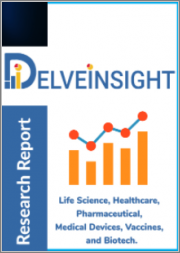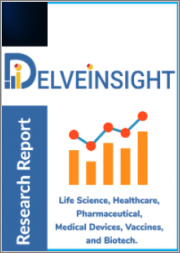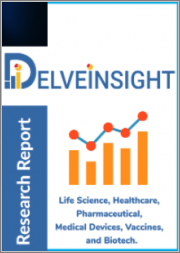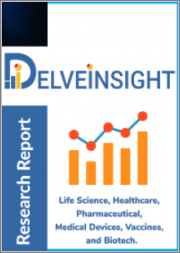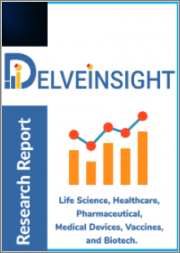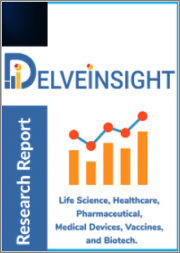
|
시장보고서
상품코드
1580008
세계의 클로스트리듐 디피실 치료 시장 : 치료 유형별, 투여 경로별, 환자 연령층별, 최종 사용자별 - 예측(2025-2030년)Clostridium Difficile Treatment Market by Treatment Type (Antibiotics Treatment, Non-Antibiotic Treatment), Route of Administration (Oral, Parenteral), Patient Age Group, End-User - Global Forecast 2025-2030 |
||||||
클로스트리듐 디피실 치료 시장은 2023년에 88억 2,000만 달러로 평가되었고, 2024년에는 94억 1,000만 달러로 추정되며, CAGR 6.89%로 성장할 전망이고, 2030년에는 140억 7,000만 달러에 달할 것으로 예상됩니다.
클로스트리듐 디피실 치료 시장은 심각한 설사 및 대장염을 일으키는 경우가 많은 클로스트리듐 디피실균에 의한 감염을 다루는 것을 목적으로 하는 진단, 치료, 예방 솔루션의 범위를 포함합니다. 효과적인 치료의 필요성은 높은 감염 재발률, 항생제 내성 및 C. difficile 감염(CDI)과 관련된 심각한 이환율에 의해 야기됩니다. 적용 영역은 주로 병원, 전문 클리닉, 장기 케어 시설 등 헬스케어 부문에 걸쳐 있습니다. 최종 용도는 의료 서비스 제공업체, 환자 및 간병인에게 집중되어 감염의 발생을 줄이고 환자의 결과를 개선하려고 합니다.
| 주요 시장 통계 | |
|---|---|
| 기준년(2023년) | 88억 2,000만 달러 |
| 예측년(2024년) | 94억 1,000만 달러 |
| 예측년(2030년) | 140억 7,000만 달러 |
| CAGR(%) | 6.89% |
주요 성장 요인으로는 CDI 발생률 증가, 노화, 입원률 증가, 항생제 관련 설사에 대한 의식 증가 등이 있습니다. 또한 마이크로바이옴 연구와 대변 미생물총 이식(FMT)의 진보는 혁신적인 치료 접근법을 주도하고 있습니다. 이 시장은 건강한 장내 세균총의 회복을 목적으로 하는 좁은 스펙트럼 항생제, 효과적인 백신, 신규 프로바이오틱스의 개발에 있어서 잠재적인 비즈니스 기회를 목격하고 있습니다. 그러나 고급 치료법의 고가, 엄격한 규제 요건, 미생물 기반 치료와 관련된 복잡성 등의 제약이 큰 과제가 되고 있습니다. 항생제 내성의 위험과 현재 치료법의 제한된 효능은 시장 예측 불가능성을 더욱 두드러지게 합니다.
기술 혁신이 필요한 분야에는 저침습성 마이크로바이옴 복구 기술 연구, 부작용이 적은 대체 요법 개발, CDI 발병을 조기에 발견하기 위한 효율적인 진단 도구 등이 있습니다. 게다가, 유망한 치료법으로서, 표적화된 박테리오파지 및 인공 프로바이오틱스를 생산하기 위한 합성 생물학을 탐구할 수도 있습니다. 현재 진행 중인 임상 연구와 바이오테크놀러지 기업과 학술 기관 간의 공동 연구가 증가함에 따라 시장의 특성은 매우 역동적입니다. 새로운 비즈니스 기회를 잡기 위해 이해관계자들은 견고한 연구개발 파이프라인에 투자하고 혁신의 신속한 개발과 상업화를 위한 전략적 파트너십을 키워야 합니다. 또한 규제 준수를 유지하고 투명성이 높은 상환 정책을 제창하는 것은 시장 성장 억제요인을 완화하는 데 도움이 됩니다.
시장 역학 : 급속히 진화하는 클로스트리듐 디피실 치료 시장의 주요 시장 인사이트 해명
클로스트리듐 디피실 치료 시장은 수요 및 공급의 역동적인 상호작용에 의해 변모하고 있습니다. 이러한 시장 역학의 진화를 이해함으로써 기업은 충분한 정보를 바탕으로 투자결정, 전략적 결정 정밀화, 새로운 비즈니스 기회 획득에 대비할 수 있습니다. 이러한 동향을 종합적으로 파악함으로써 기업은 정치적, 지리적, 기술적, 사회적, 경제적 영역에 걸친 다양한 위험을 완화할 수 있으며, 소비자 행동과 그것이 제조 비용과 구매 동향에 미치는 영향을보다 명확하게 이해할 수 있습니다.
- 시장 성장 촉진요인
- 클로스트리듐 디피실 감염의 유병률 상승
- 예방전략과 프로바이오틱스에 주목
- 클로스트리듐 디피실 감염증을 치료하기 위한 헬스케어 의식과 이니셔티브의 고조
- 시장 성장 억제요인
- 항생제 내성과 재발률
- 시장 기회
- 표적요법 및 선진요법의 개발
- 진단 툴과 기술의 진보
- 시장의 과제
- 정확한 진단의 복잡성과 규제 준수의 한계
Porter's Five Forces : 클로스트리듐 디피실 치료 시장을 탐색하는 전략 도구
Porter's Five Forces 프레임 워크는 시장 상황경쟁 구도를 이해하는 중요한 도구입니다. Porter's Five Forces 프레임 워크는 기업의 경쟁력을 평가하고 전략적 기회를 탐구하는 명확한 기술을 제공합니다. 이 프레임 워크는 기업이 시장 내 세력도를 평가하고 신규 사업의 수익성을 결정하는 데 도움이 됩니다. 이러한 인사이트를 통해 기업은 자사의 강점을 활용하고, 약점을 해결하고, 잠재적인 과제를 피할 수 있으며, 보다 강인한 시장에서의 포지셔닝을 보장할 수 있습니다.
PESTLE 분석 : 클로스트리듐 디피실 치료 시장에서 외부로부터의 영향 파악
외부 거시 환경 요인은 클로스트리듐 디피실 치료 시장의 성과 역학을 형성하는데 매우 중요한 역할을 합니다. 정치적, 경제적, 사회적, 기술적, 법적, 환경적 요인 분석은 이러한 영향을 탐색하는 데 필요한 정보를 제공합니다. PESTLE 요인을 조사함으로써 기업은 잠재적인 위험과 기회를 더 잘 이해할 수 있습니다. 이 분석을 통해 기업은 규제, 소비자 선호, 경제 동향의 변화를 예측하고 앞으로 예상되는 적극적인 의사 결정을 할 준비를 할 수 있습니다.
시장 점유율 분석 : 클로스트리듐 디피실 치료 시장에서 경쟁 구도 파악
클로스트리듐 디피실 치료 시장의 상세한 시장 점유율 분석을 통해 공급업체의 성과를 종합적으로 평가할 수 있습니다. 기업은 수익, 고객 기반, 성장률 등 주요 지표를 비교하여 경쟁 포지셔닝을 밝힐 수 있습니다. 이 분석을 통해 시장 집중, 단편화, 통합 동향을 밝혀내고 벤더들은 경쟁이 치열해지는 가운데 자사의 지위를 높이는 전략적 의사 결정을 내리는 데 필요한 지식을 얻을 수 있습니다.
FPNV 포지셔닝 매트릭스 : 클로스트리듐 디피실 치료 시장에서 공급업체의 성능 평가
FPNV 포지셔닝 매트릭스는 클로스트리듐 디피실 치료 시장에서 공급업체를 평가하는 중요한 도구입니다. 이 행렬을 통해 비즈니스 조직은 공급업체의 비즈니스 전략과 제품 만족도를 기준으로 평가하여 목표에 맞는 충분한 정보를 바탕으로 의사 결정을 내릴 수 있습니다. 네 가지 사분면을 통해 공급업체를 명확하고 정확하게 부문화하고 전략 목표에 가장 적합한 파트너 및 솔루션을 파악할 수 있습니다.
전략 분석 및 추천 : 클로스트리듐 디피실 치료 시장에서 성공을 위한 길 그리기
클로스트리듐 디피실 치료 시장의 전략 분석은 세계 시장에서의 존재를 강화하려는 기업에게 필수적입니다. 주요 자원, 역량 및 성과 지표를 검토함으로써 기업은 성장 기회를 파악하고 개선을 위해 노력할 수 있습니다. 이러한 접근 방식을 통해 경쟁 구도에서 과제를 극복하고 새로운 비즈니스 기회를 활용하여 장기적인 성공을 거둘 수 있는 체제를 구축할 수 있습니다.
이 보고서는 주요 관심 분야를 포괄하는 시장의 종합적인 분석을 제공합니다.
1. 시장 침투 : 현재 시장 환경의 상세한 검토, 주요 기업의 광범위한 데이터, 시장 도달범위 및 전반적인 영향력을 평가합니다.
2. 시장 개척도 : 신흥 시장의 성장 기회를 파악하고 기존 분야의 확장 가능성을 평가하며 미래 성장을 위한 전략적 로드맵을 제공합니다.
3. 시장 다양화 : 최근 제품 출시, 미개척 지역, 업계의 주요 진보, 시장을 형성하는 전략적 투자를 분석합니다.
4. 경쟁 평가 및 정보 : 경쟁 구도를 철저히 분석하여 시장 점유율, 사업 전략, 제품 포트폴리오, 인증, 규제 당국 승인, 특허 동향, 주요 기업의 기술 진보 등을 검증합니다.
5. 제품 개발 및 혁신 : 미래 시장 성장을 가속할 것으로 예상되는 최첨단 기술, 연구개발 활동, 제품 혁신을 강조합니다.
또한 이해관계자가 충분한 정보를 얻고 의사결정을 할 수 있도록 중요한 질문에 대답하고 있습니다.
1. 현재 시장 규모 및 향후 성장 예측은?
2. 최고의 투자 기회를 제공하는 제품, 부문 및 지역은 어디입니까?
3. 시장을 형성하는 주요 기술 동향 및 규제의 영향은?
4. 주요 벤더의 시장 점유율 및 경쟁 포지션은?
5. 벤더 시장 진입 및 철수 전략의 원동력이 되는 수익원과 전략적 기회는 무엇인가?
목차
제1장 서문
제2장 조사 방법
제3장 주요 요약
제4장 시장 개요
제5장 시장 인사이트
- 시장 역학
- 성장 촉진요인
- 클로스트리듐 디피실 감염증의 만연율의 상승
- 예방전략 및 프로바이오틱스에 초점
- 클로스트리듐 디피실 감염증의 치료에 대한 헬스케어 의식과 대처의 향상
- 억제요인
- 항생제 내성과 재발률
- 기회
- 표적치료 및 선진치료의 개발
- 진단 툴과 기술의 진보
- 과제
- 정확한 진단의 복잡성과 규제 준수의 한계
- 성장 촉진요인
- 시장 세분화 분석
- 치료 유형별 : 재발률을 낮게 억제하고 장내 세균총에 미치는 영향을 최소화하기 위해 피닥소마이신 수요 증가
- 최종 사용자별 : 병원이나 진료소 전체에서 클로스트리듐 디피실 치료의 이용 가능성이 향상
- Porter's Five Forces 분석
- PESTEL 분석
- 정치적
- 경제
- 사교
- 기술적
- 법률상
- 환경
제6장 클로스트리듐 디피실 치료 시장 : 치료 유형별
- 항생제 치료
- 피닥소미신
- 메트로니다졸
- 반코마이신
- 항생제를 사용하지 않는 치료
- 대변 미생물 이식
- 프로바이오틱스
제7장 클로스트리듐 디피실 치료 시장 : 투여 경로별
- 오랄
- 비경구
제8장 클로스트리듐 디피실 치료 시장 : 환자 연령층별
- 성인
- 노년병
- 소아과
제9장 클로스트리듐 디피실 치료 시장 : 최종 사용자별
- 재택 헬스케어
- 병원 및 클리닉
제10장 아메리카의 클로스트리듐 디피실 치료 시장
- 아르헨티나
- 브라질
- 캐나다
- 멕시코
- 미국
제11장 아시아태평양의 클로스트리듐 디피실 치료 시장
- 호주
- 중국
- 인도
- 인도네시아
- 일본
- 말레이시아
- 필리핀
- 싱가포르
- 한국
- 대만
- 태국
- 베트남
제12장 유럽, 중동 및 아프리카의 클로스트리듐 디피실 치료 시장
- 덴마크
- 이집트
- 핀란드
- 프랑스
- 독일
- 이스라엘
- 이탈리아
- 네덜란드
- 나이지리아
- 노르웨이
- 폴란드
- 카타르
- 러시아
- 사우디아라비아
- 남아프리카
- 스페인
- 스웨덴
- 스위스
- 터키
- 아랍에미리트(UAE)
- 영국
제13장 경쟁 구도
- 시장 점유율 분석(2023년)
- FPNV 포지셔닝 매트릭스(2023년)
- 경쟁 시나리오 분석
- Vedanta Biosciences는 재발성 클로스트리듐 디피실 감염과 싸우기 위한 3상 시험에서 VE303을 진행하여 시장 승인과 전략적 투자를 시야에 둡니다.
- Acurx Pharmaceuticals는 FDA에 의한 클로스트리듐 디피실 치료의 2상 종료 승인을 받아 이베자 포르스타트를 3상 임상시험으로 진행하고 있습니다.
- 전략 분석 및 제안
기업 목록
- Acurx Pharmaceuticals, Inc.
- Aridis Pharmaceuticals, Inc.
- Astellas Pharma Inc.
- AstraZeneca PLC
- GlaxoSmithKlinePLC
- Immuron Limited
- Merck & Co., Inc.
- Mylan NV
- Pfizer, Inc.
- Rebiotix Inc
- Roche Holding AG
- Seres Therapeutics, Inc.
- Summit Therapeutics, Inc.
- Synthetic Biologics, Inc.
- Thermo Fisher Scientific, Inc.
- Trinity Biotech PLC
- Vedanta Biosciences, Inc.
The Clostridium Difficile Treatment Market was valued at USD 8.82 billion in 2023, expected to reach USD 9.41 billion in 2024, and is projected to grow at a CAGR of 6.89%, to USD 14.07 billion by 2030.
The Clostridium Difficile Treatment market encompasses a range of diagnostic, therapeutic, and preventive solutions aimed at addressing infections caused by the Clostridium difficile bacterium, which often leads to severe diarrhea and colitis. The necessity for effective treatments is driven by high infection recurrence rates, antibiotic resistance, and the significant morbidity associated with C. difficile infections (CDIs). Application areas primarily span across the healthcare sector, including hospitals, specialty clinics, and long-term care facilities. End-use is concentrated among healthcare providers, patients, and caregivers, seeking to reduce incidences and improve patient outcomes.
| KEY MARKET STATISTICS | |
|---|---|
| Base Year [2023] | USD 8.82 billion |
| Estimated Year [2024] | USD 9.41 billion |
| Forecast Year [2030] | USD 14.07 billion |
| CAGR (%) | 6.89% |
Key growth factors include rising incidences of CDIs, an aging population, increased hospitalization rates, and greater awareness of antibiotic-associated diarrhea. Additionally, advancements in microbiome research and fecal microbiota transplantation (FMT) have spearheaded innovative treatment approaches. The market is witnessing potential opportunities in the development of narrow-spectrum antibiotics, effective vaccines, and novel probiotics aimed at restoring healthy gut flora. However, limitations such as the high cost of advanced therapies, stringent regulatory requirements, and the complexities associated with microbiome-based treatments present significant challenges. The risks of antibiotic resistance and limited efficacy of current treatments further underscore market unpredictability.
Areas ripe for innovation include research into less invasive microbiome restoration techniques, development of alternative therapies with fewer side effects, and more efficient diagnostic tools for early detection of CDI onset. Additionally, there lies potential in exploring synthetic biology for producing targeted bacteriophages or engineered probiotics as promising interventions. The market's nature remains highly dynamic due to ongoing clinical studies and increasing collaboration between biotechnology firms and academic institutions. To seize emerging opportunities, stakeholders should invest in robust R&D pipelines and foster strategic partnerships for faster development and commercialization of their innovations. Maintaining regulatory compliance and advocating for more transparent reimbursement policies can also help mitigate market limitations.
Market Dynamics: Unveiling Key Market Insights in the Rapidly Evolving Clostridium Difficile Treatment Market
The Clostridium Difficile Treatment Market is undergoing transformative changes driven by a dynamic interplay of supply and demand factors. Understanding these evolving market dynamics prepares business organizations to make informed investment decisions, refine strategic decisions, and seize new opportunities. By gaining a comprehensive view of these trends, business organizations can mitigate various risks across political, geographic, technical, social, and economic domains while also gaining a clearer understanding of consumer behavior and its impact on manufacturing costs and purchasing trends.
- Market Drivers
- Rising prevalence of Clostridium difficile infection
- Focus on preventive strategies and probiotics
- Increased healthcare awareness and initiatives to treat clostridium difficile infection
- Market Restraints
- Antibiotic resistance and recurrence rates
- Market Opportunities
- Development of targeted and advanced therapies
- Advancements in diagnostic tools and techniques
- Market Challenges
- Complexity of accurate diagnosis and limitations in regulatory compliance
Porter's Five Forces: A Strategic Tool for Navigating the Clostridium Difficile Treatment Market
Porter's five forces framework is a critical tool for understanding the competitive landscape of the Clostridium Difficile Treatment Market. It offers business organizations with a clear methodology for evaluating their competitive positioning and exploring strategic opportunities. This framework helps businesses assess the power dynamics within the market and determine the profitability of new ventures. With these insights, business organizations can leverage their strengths, address weaknesses, and avoid potential challenges, ensuring a more resilient market positioning.
PESTLE Analysis: Navigating External Influences in the Clostridium Difficile Treatment Market
External macro-environmental factors play a pivotal role in shaping the performance dynamics of the Clostridium Difficile Treatment Market. Political, Economic, Social, Technological, Legal, and Environmental factors analysis provides the necessary information to navigate these influences. By examining PESTLE factors, businesses can better understand potential risks and opportunities. This analysis enables business organizations to anticipate changes in regulations, consumer preferences, and economic trends, ensuring they are prepared to make proactive, forward-thinking decisions.
Market Share Analysis: Understanding the Competitive Landscape in the Clostridium Difficile Treatment Market
A detailed market share analysis in the Clostridium Difficile Treatment Market provides a comprehensive assessment of vendors' performance. Companies can identify their competitive positioning by comparing key metrics, including revenue, customer base, and growth rates. This analysis highlights market concentration, fragmentation, and trends in consolidation, offering vendors the insights required to make strategic decisions that enhance their position in an increasingly competitive landscape.
FPNV Positioning Matrix: Evaluating Vendors' Performance in the Clostridium Difficile Treatment Market
The Forefront, Pathfinder, Niche, Vital (FPNV) Positioning Matrix is a critical tool for evaluating vendors within the Clostridium Difficile Treatment Market. This matrix enables business organizations to make well-informed decisions that align with their goals by assessing vendors based on their business strategy and product satisfaction. The four quadrants provide a clear and precise segmentation of vendors, helping users identify the right partners and solutions that best fit their strategic objectives.
Strategy Analysis & Recommendation: Charting a Path to Success in the Clostridium Difficile Treatment Market
A strategic analysis of the Clostridium Difficile Treatment Market is essential for businesses looking to strengthen their global market presence. By reviewing key resources, capabilities, and performance indicators, business organizations can identify growth opportunities and work toward improvement. This approach helps businesses navigate challenges in the competitive landscape and ensures they are well-positioned to capitalize on newer opportunities and drive long-term success.
Key Company Profiles
The report delves into recent significant developments in the Clostridium Difficile Treatment Market, highlighting leading vendors and their innovative profiles. These include Acurx Pharmaceuticals, Inc., Aridis Pharmaceuticals, Inc., Astellas Pharma Inc., AstraZeneca PLC, GlaxoSmithKlinePLC, Immuron Limited, Merck & Co., Inc., Mylan N.V., Pfizer, Inc., Rebiotix Inc, Roche Holding AG, Seres Therapeutics, Inc., Summit Therapeutics, Inc., Synthetic Biologics, Inc., Thermo Fisher Scientific, Inc., Trinity Biotech PLC, and Vedanta Biosciences, Inc..
Market Segmentation & Coverage
This research report categorizes the Clostridium Difficile Treatment Market to forecast the revenues and analyze trends in each of the following sub-markets:
- Based on Treatment Type, market is studied across Antibiotics Treatment and Non-Antibiotic Treatment. The Antibiotics Treatment is further studied across Fidaxomicin, Metronidazole, and Vancomycin. The Non-Antibiotic Treatment is further studied across Fecal Microbiota Transplantation and Probiotics.
- Based on Route of Administration, market is studied across Oral and Parenteral.
- Based on Patient Age Group, market is studied across Adults, Geriatric, and Pediatric.
- Based on End-User, market is studied across Home Healthcare and Hospitals & Clinics.
- Based on Region, market is studied across Americas, Asia-Pacific, and Europe, Middle East & Africa. The Americas is further studied across Argentina, Brazil, Canada, Mexico, and United States. The United States is further studied across California, Florida, Illinois, New York, Ohio, Pennsylvania, and Texas. The Asia-Pacific is further studied across Australia, China, India, Indonesia, Japan, Malaysia, Philippines, Singapore, South Korea, Taiwan, Thailand, and Vietnam. The Europe, Middle East & Africa is further studied across Denmark, Egypt, Finland, France, Germany, Israel, Italy, Netherlands, Nigeria, Norway, Poland, Qatar, Russia, Saudi Arabia, South Africa, Spain, Sweden, Switzerland, Turkey, United Arab Emirates, and United Kingdom.
The report offers a comprehensive analysis of the market, covering key focus areas:
1. Market Penetration: A detailed review of the current market environment, including extensive data from top industry players, evaluating their market reach and overall influence.
2. Market Development: Identifies growth opportunities in emerging markets and assesses expansion potential in established sectors, providing a strategic roadmap for future growth.
3. Market Diversification: Analyzes recent product launches, untapped geographic regions, major industry advancements, and strategic investments reshaping the market.
4. Competitive Assessment & Intelligence: Provides a thorough analysis of the competitive landscape, examining market share, business strategies, product portfolios, certifications, regulatory approvals, patent trends, and technological advancements of key players.
5. Product Development & Innovation: Highlights cutting-edge technologies, R&D activities, and product innovations expected to drive future market growth.
The report also answers critical questions to aid stakeholders in making informed decisions:
1. What is the current market size, and what is the forecasted growth?
2. Which products, segments, and regions offer the best investment opportunities?
3. What are the key technology trends and regulatory influences shaping the market?
4. How do leading vendors rank in terms of market share and competitive positioning?
5. What revenue sources and strategic opportunities drive vendors' market entry or exit strategies?
Table of Contents
1. Preface
- 1.1. Objectives of the Study
- 1.2. Market Segmentation & Coverage
- 1.3. Years Considered for the Study
- 1.4. Currency & Pricing
- 1.5. Language
- 1.6. Stakeholders
2. Research Methodology
- 2.1. Define: Research Objective
- 2.2. Determine: Research Design
- 2.3. Prepare: Research Instrument
- 2.4. Collect: Data Source
- 2.5. Analyze: Data Interpretation
- 2.6. Formulate: Data Verification
- 2.7. Publish: Research Report
- 2.8. Repeat: Report Update
3. Executive Summary
4. Market Overview
5. Market Insights
- 5.1. Market Dynamics
- 5.1.1. Drivers
- 5.1.1.1. Rising prevalence of Clostridium difficile infection
- 5.1.1.2. Focus on preventive strategies and probiotics
- 5.1.1.3. Increased healthcare awareness and initiatives to treat clostridium difficile infection
- 5.1.2. Restraints
- 5.1.2.1. Antibiotic resistance and recurrence rates
- 5.1.3. Opportunities
- 5.1.3.1. Development of targeted and advanced therapies
- 5.1.3.2. Advancements in diagnostic tools and techniques
- 5.1.4. Challenges
- 5.1.4.1. Complexity of accurate diagnosis and limitations in regulatory compliance
- 5.1.1. Drivers
- 5.2. Market Segmentation Analysis
- 5.2.1. Treatment Type: Growing demand for Fidaxomicin to ensure low recurrence rates and minimal disruption to the gut microbiome
- 5.2.2. End User: Increasing availability of clostridium difficile treatment across hospitals and clinics
- 5.3. Porter's Five Forces Analysis
- 5.3.1. Threat of New Entrants
- 5.3.2. Threat of Substitutes
- 5.3.3. Bargaining Power of Customers
- 5.3.4. Bargaining Power of Suppliers
- 5.3.5. Industry Rivalry
- 5.4. PESTLE Analysis
- 5.4.1. Political
- 5.4.2. Economic
- 5.4.3. Social
- 5.4.4. Technological
- 5.4.5. Legal
- 5.4.6. Environmental
6. Clostridium Difficile Treatment Market, by Treatment Type
- 6.1. Introduction
- 6.2. Antibiotics Treatment
- 6.2.1. Fidaxomicin
- 6.2.2. Metronidazole
- 6.2.3. Vancomycin
- 6.3. Non-Antibiotic Treatment
- 6.3.1. Fecal Microbiota Transplantation
- 6.3.2. Probiotics
7. Clostridium Difficile Treatment Market, by Route of Administration
- 7.1. Introduction
- 7.2. Oral
- 7.3. Parenteral
8. Clostridium Difficile Treatment Market, by Patient Age Group
- 8.1. Introduction
- 8.2. Adults
- 8.3. Geriatric
- 8.4. Pediatric
9. Clostridium Difficile Treatment Market, by End-User
- 9.1. Introduction
- 9.2. Home Healthcare
- 9.3. Hospitals & Clinics
10. Americas Clostridium Difficile Treatment Market
- 10.1. Introduction
- 10.2. Argentina
- 10.3. Brazil
- 10.4. Canada
- 10.5. Mexico
- 10.6. United States
11. Asia-Pacific Clostridium Difficile Treatment Market
- 11.1. Introduction
- 11.2. Australia
- 11.3. China
- 11.4. India
- 11.5. Indonesia
- 11.6. Japan
- 11.7. Malaysia
- 11.8. Philippines
- 11.9. Singapore
- 11.10. South Korea
- 11.11. Taiwan
- 11.12. Thailand
- 11.13. Vietnam
12. Europe, Middle East & Africa Clostridium Difficile Treatment Market
- 12.1. Introduction
- 12.2. Denmark
- 12.3. Egypt
- 12.4. Finland
- 12.5. France
- 12.6. Germany
- 12.7. Israel
- 12.8. Italy
- 12.9. Netherlands
- 12.10. Nigeria
- 12.11. Norway
- 12.12. Poland
- 12.13. Qatar
- 12.14. Russia
- 12.15. Saudi Arabia
- 12.16. South Africa
- 12.17. Spain
- 12.18. Sweden
- 12.19. Switzerland
- 12.20. Turkey
- 12.21. United Arab Emirates
- 12.22. United Kingdom
13. Competitive Landscape
- 13.1. Market Share Analysis, 2023
- 13.2. FPNV Positioning Matrix, 2023
- 13.3. Competitive Scenario Analysis
- 13.3.1. Vedanta Biosciences advances VE303 in phase III trial to combat recurrent c. difficile infections, eyes market approval, and strategic investments
- 13.3.2. Acurx Pharmaceuticals advances Ibezapolstat to phase 3 clinical trials following FDA end-of-phase 2 approval for clostridium difficile treatment
- 13.4. Strategy Analysis & Recommendation
Companies Mentioned
- 1. Acurx Pharmaceuticals, Inc.
- 2. Aridis Pharmaceuticals, Inc.
- 3. Astellas Pharma Inc.
- 4. AstraZeneca PLC
- 5. GlaxoSmithKlinePLC
- 6. Immuron Limited
- 7. Merck & Co., Inc.
- 8. Mylan N.V.
- 9. Pfizer, Inc.
- 10. Rebiotix Inc
- 11. Roche Holding AG
- 12. Seres Therapeutics, Inc.
- 13. Summit Therapeutics, Inc.
- 14. Synthetic Biologics, Inc.
- 15. Thermo Fisher Scientific, Inc.
- 16. Trinity Biotech PLC
- 17. Vedanta Biosciences, Inc.










